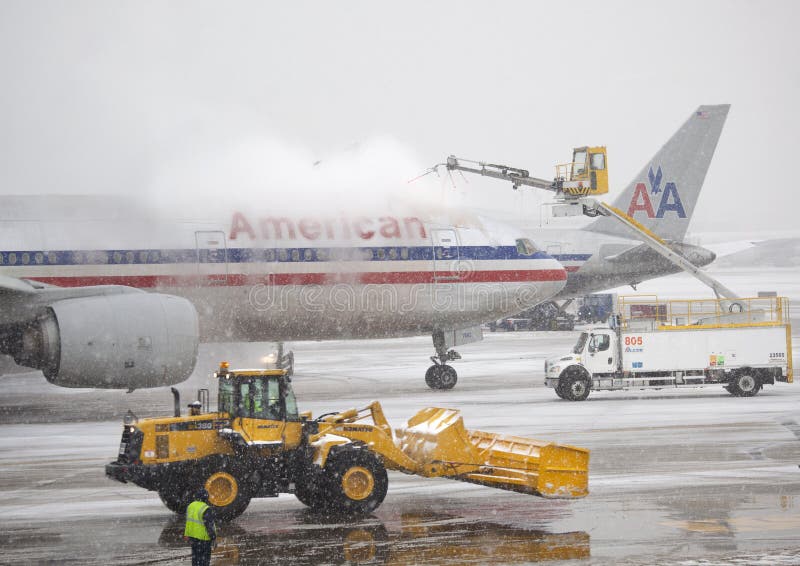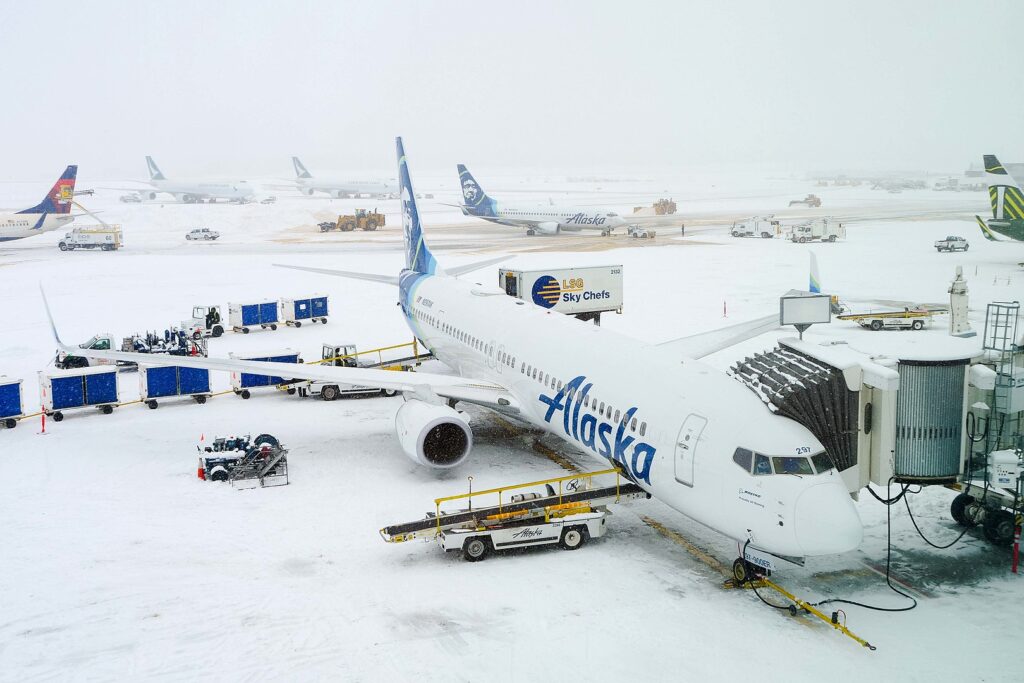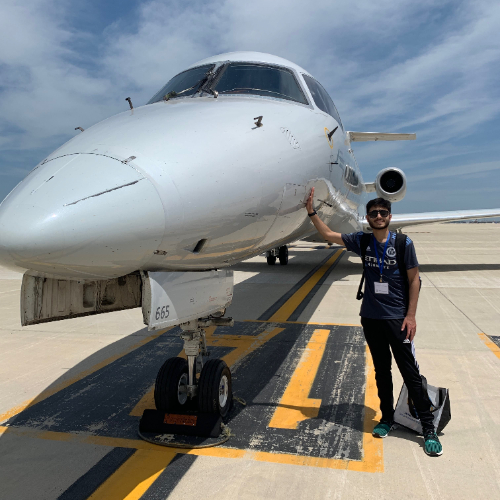Winter Storm Blair has unleashed a huge blast of snow, ice, and freezing temperatures across the Central and Eastern United States.
As of Sunday afternoon, over 6,700 flights and counting have been disrupted. This includes cancellations and significant delays, leaving passengers scrambling to change flights and adjust travel plans.
Winter Storm Blair
Storm Blair is expected to bring "the heaviest snowfall in a decade" to a large country area. Major roadways have been snow-covered across Kansas, Nebraska, and Indiana.
The storm's impact is such that Indiana has called in its National Guard to help motorists stuck on the roads.
Meteorologists expect at least eight inches of snow to fall in communities north of Interstate 70. Blizzard wind gusts are expected to be up to 45 miles per hour.
According to the National Weather Service, around 63 million people were under some winter storm warning or advisory by Sunday, January 5th.

The storm is impacting the Midwest and slowly beginning its impact on the Mid-Atlantic states. A hard freeze is even being expected as far south as Florida.
Flight Disruptions
St. Louis Lambert International Airport (STL) has been one of the hardest-hit airports from Storm Blair. FlightAware says over 200 flights in and out of the airport have been cancelled.
Flightradar24 lists STL Airport's "Disruption Index" as a "5.0". This is the highest value on the index and indicates a major problem, with several cancellations and delays.
While most flights in and out of St. Louis have been cancelled, some inbound flights were diverted to airports in the Chicago area.
According to Forbes, there have been 1,486 flight cancellations and 5,270 delays as of 4:30 pm Eastern Time on Sunday, January 5th.
In addition to St. Louis, other airports with triple-digit numbers of flight cancellations include Kansas City (MCI) and Dallas-Fort Worth (DFW); both also had disruption indexes of 5.0.
Regarding airlines, Forbes reported that American Airlines had the highest percentage of delayed flights on Sunday, at 25%. Southwest was 18%, United 16%, and Delta 15%.
Southwest leads in this regard regarding cancellations, with 384 flights being cancelled as of Sunday afternoon. This represented 8% of the airline's schedule that day.

The legacy carriers were significantly less, with American at 175 flights (5% of its schedule), United at 88 (3%), and Delta at 67 (2%).
With such widespread disruption, airlines issue travel waivers for passengers impacted by the storm. Such waivers are only in effect for specific airports, and travelers should check with their airlines regarding which airports are included.
For example, many airlines, like American Airlines, send out specific emails to passengers travelling during these disruption periods. The email will list what airports are included in the waivers.
If issued waivers, passengers can take earlier flights or postpone them by a few days. The airline will waive all fare differences if its waiver includes an airport you are flying from.
With Storm Blair expected to start hitting the Mid-Atlantic states as early as Sunday evening, travelers flying from airports like Washington Dulles (IAD), Reagan (DCA), and Baltimore (BWI), among others, should expect some travel waiver options being issued.
Comments (0)
Add Your Comment
SHARE
TAGS
NEWS winter stormwinter storm blairstorm blair flightsus flight cancelationsflights canceledstorm blair travel advisorywinter storm travel updateRECENTLY PUBLISHED
 Learjet Owned By Vince Neil Crashes Into Gulfstream Jet, 1 Fatality Confirmed
On February 10th, around 14:30 local time, a Learjet private jet aircraft crashed into another private jet after landing at Scottsdale Airport (SCF) in Arizona.
NEWS
READ MORE »
Learjet Owned By Vince Neil Crashes Into Gulfstream Jet, 1 Fatality Confirmed
On February 10th, around 14:30 local time, a Learjet private jet aircraft crashed into another private jet after landing at Scottsdale Airport (SCF) in Arizona.
NEWS
READ MORE »
 Seattle Plane Strike 2025: Japan Airlines and Delta Collision Raises Safety Concerns
Seattle-Tacoma International Airport saw a concerning incident on Wednesday morning when a Japan Airlines (JAL) plane clipped a parked Delta Air Lines jet while taxiing. Thankfully, no one was injured, but passengers described the collision as a frightening experience.
NEWS
READ MORE »
Seattle Plane Strike 2025: Japan Airlines and Delta Collision Raises Safety Concerns
Seattle-Tacoma International Airport saw a concerning incident on Wednesday morning when a Japan Airlines (JAL) plane clipped a parked Delta Air Lines jet while taxiing. Thankfully, no one was injured, but passengers described the collision as a frightening experience.
NEWS
READ MORE »
 Ethiopian Airlines Expands Cargo Fleet with New Boeing 777 Freighter
Ethiopian Airlines has expanded its cargo fleet with a brand-new Boeing 777 Freighter, registered as ET-BAB (MSN 68140). The aircraft was delivered directly from Boeing’s factory in Everett, Washington, USA, and landed at Addis Ababa Bole International Airport at 3:41 PM (GMT+3) on Wednesday, January 22, 2025.
NEWS
READ MORE »
Ethiopian Airlines Expands Cargo Fleet with New Boeing 777 Freighter
Ethiopian Airlines has expanded its cargo fleet with a brand-new Boeing 777 Freighter, registered as ET-BAB (MSN 68140). The aircraft was delivered directly from Boeing’s factory in Everett, Washington, USA, and landed at Addis Ababa Bole International Airport at 3:41 PM (GMT+3) on Wednesday, January 22, 2025.
NEWS
READ MORE »





